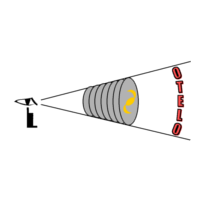We have developed several tools related with the study of OTELO survey and the OTELO pseudo spectra. They include:
-
OTELO Simulator: It is a dummy simulator with poduces an OTELO pseudo spectra from a template file. It is ussefull to take a taste about how OTELO pseudo spectra would looks like in ideal conditions.
Important caveant: it uses a simple response curve for each TF, and it does not take into account variations of the response of the system (distance to the FOV center and dithering). See OTELO pseudo spectra page for more details.
- Spectral Line summary: It is a collection of representative emission and absorption lines than would be found in OTELO pseudo spectra. Althougth the lines list is not complete, it take into consideration most of relevant spectral lines used/observed in different astrophysical systems.
- Thumbnails (and acces to OTELO pseudo spectra): Quick visualization of OTELO pseudo-spectra (only released data and some examples). This tool also provide the access to individual OTELO pseudo-spectra
- Analysis Tool: Visualization tool of OTELO data, including cross maching with other database, images etc... It comprise all the available information to analyze the sources in the catalog (only released data and some examples).
Here you can find the catalogue data relase. We provide two tables with a self-explained header:
- Catalogue 1 with Obj ID, RA, DEC and Magnitudes and errors in X (Chandra), u,g,r,i,,z (CFHT filters), J, H, Ks (WIRDS) and D (OTELO-Depp) bandsSExtractor star/galaxy classifier and flags and zbest (and 68% low and upper limits) from LePhare analysis
- Catalogue 2 with Obj ID, and Magnitudes and errors in FUV, NUV (GALEX), 3.6, 4.5, 5.8, 8.0, 24, 100, 160, 250 and 350 micoms zsepc DEEP2 (if available), and zbest from CFHTLS-T04 and limits (if available)
In addition, individual OTELO pseudo spectra can be obtained from the Download PS button in the Thumnails page.
Please, do not forget that any work ussing of OTELO data should refer to Bongiovanni et al. 2019 A&A 631, 9. Contact Angel Bongiovanni (bongio_at_iram.es) for any question about the data.
